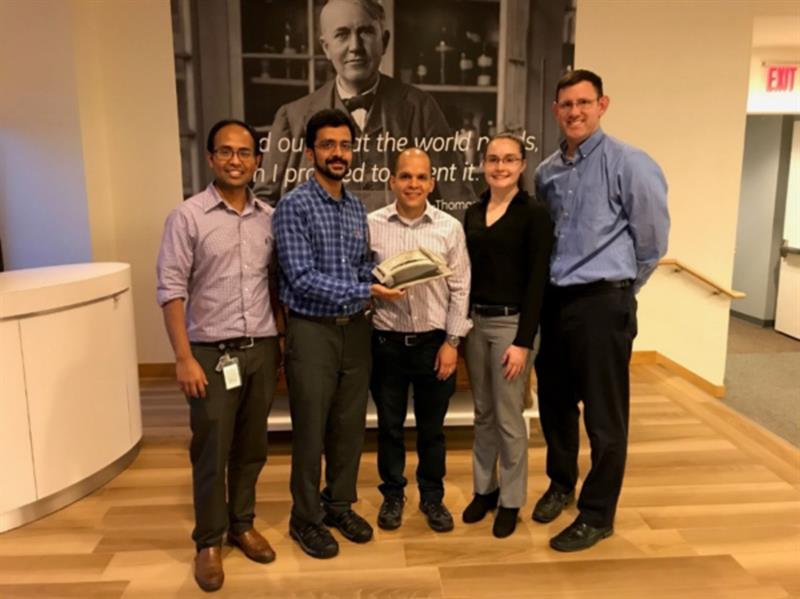Binder jet works like an inkjet printer, laying down a proprietary binder, or ‘glue’, to form complex parts on a flat bed of metal powder.
The binder jet technology is similar to GE’s laser-powered 3D metal printers, which use beams of light to melt and fuse layers of metal powder. The key difference is that the binder jet uses a binding agent to make the metal powder stick together. Also, the binder jet machine can print at least 10 times faster than laser-based methods and can produce larger parts.
Additionally, this process requires less energy to print parts compared with laser metal printers, explained Arunkumar Natarajan, technical lead for the binder jet programme: “Instead of firing high-power lasers over a bed of metal powder, we’re depositing a binder glue like ink on paper.” The technology is so fast and powerful, Natarajan said, it could disrupt the multibillion-dollar casting industry.
“We pulled from across the GE Research Lab’s deep material and chemistry expertise to develop a special binder that is core to the success of the process,” Natarajan continued. “We’re very excited about the binder jet concept, given the opportunity it provides for faster printing of more parts versus other additive and even conventional manufacturing techniques.”
 From left to right: Ananda Barua, Arunkumar Natarajan, Ken Salas, Meghan Borz, Raymond Martell, holding the LEAP engine flowpath component printed on a binder jet. Image credit: GE Global Research.
From left to right: Ananda Barua, Arunkumar Natarajan, Ken Salas, Meghan Borz, Raymond Martell, holding the LEAP engine flowpath component printed on a binder jet. Image credit: GE Global Research.
Unlike laser-printed metal parts, however, metal parts made on the binder jet require more extensive post-processing. The printed metal part initially comes out in a fragile state and must be cured to achieve the right shape and make it strong and durable.
GE believes that, using the binder jet technology, it could deliver the LEAP programme tens of millions of dollars in cost savings as well as disrupting the structural casting industry. The team says this technology could print even larger parts.











